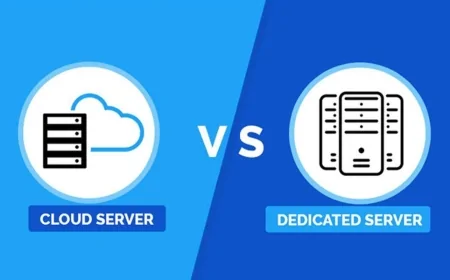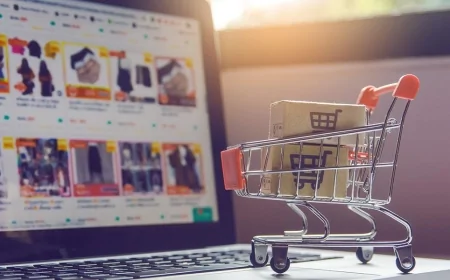7 Reasons Your Website Might Not Perform Well
With more people turning to online shopping, businesses rely on their websites more than ever. When it comes to generating income, sometimes they don’t perform quite as well as anticipated. Here, we examine the most common causes of poor performance and explain how to fix them.

With more people turning to online shopping, businesses rely on their websites more than ever. When it comes to generating income, sometimes they don’t perform quite as well as anticipated. Here, we examine the most common causes of poor performance and explain how to fix them.
1. Search Engines Can’t Find Your Website
Just because you have a website doesn’t necessarily mean that search engines have discovered it. Even if they have, they might not have indexed all your pages. Until this happens, people using search engines, like Google, won’t be able to reach your site and buy from you.
While search engines send out bots to scour the internet for new websites and pages, sometimes a website can be configured in a way that blocks these bots. If your website has been live for several months and it has still not been found, this could be the issue. To find out if this is the problem, you should check for crawl errors on your Google Search Console account.
2. Your Website Isn’t Ranking Well
90% of Google users don’t look beyond the first page of search results. With lots of businesses selling similar products and services, getting listed on the first page is very difficult to achieve, and even if you get there, there’s no guarantee of staying.
There is a two-pronged solution for this. In the short term, you may need to boost traffic by advertising. You can do this with pay-per-click (PPC) ads on Google, Bing, and other search engines, and some social media sites. Over the longer term, you can help improve your ranking and grow your organic traffic by working on your website’s SEO (search engine optimization).
3. Your website is too slow
With high-speed broadband, 5G phone connections, and superfast devices, today’s consumers expect all websites will appear and respond almost instantly. With 53% abandoning a site that takes longer than 3 seconds to load, if yours loads or reacts slowly, there’s a very high risk that users won’t hang around long enough to make a purchase.
A common reason this happens is that you do not have enough server resources to cope with the amount of data your website needs to send and receive. You can speed things up to some extent by compressing data, minimizing scripts, optimizing images, and getting rid of unnecessary plugins; however, the most effective solution is to upgrade to a more powerful hosting plan on a faster server with more storage, CPU, RAM, and bandwidth.
4. Your Site Isn’t Mobile-Friendly
In the UK, 55% of online purchases take place on mobile devices, and 79% of people have bought using a mobile device in the last 6 months. If your website is not mobile-friendly, people won’t be able to access your content correctly and will leave without buying. This means you could be losing more than half of your online revenue because of an easily fixable issue. The solution is to use a responsive theme for your website. You can check how mobile-friendly your website is using Google’s Mobile-Friendly Test.
5. Poor Navigation
When visitors arrive on a website, they expect to be able to find and buy things quickly. If they can’t find what they are looking for or it takes too long, they’ll look somewhere else. To prevent this from happening, it is important that your site is structured well and has easy-to-use navigation. Make sure you name your categories well, that things are in the right categories, and that a seen menu displays those categories. If you have a lot of products, you should also install a product search bar, preferably with a tool that lets users filter products by size, color, price, brand, etc.
6. Your Site Lacks Trust
Online buyers are increasingly cautious about getting conned and look for a range of things to show them that your site is secure and trustworthy. Without these, many potential new customers will be reluctant to buy from you. If you sell online, as a minimum, you should have an SSL certificate that provides you with a secure padlock icon in browsers and which works to encrypt customers’ bank details and personal information. In addition, display your business name, company registration number, and physical address, and, where possible, highlight independent reviews you have from Google, Trustpilot, Facebook, and elsewhere.
7. Your Site Keeps Going Offline
If your site keeps going offline so that it’s not available when people visit, it prevents purchases from being made and gives your business a poor online reputation. There are two things you can do to avoid this. First and foremost, if this is an issue caused by your host, then you need to find a new host that offers more reliable hosting with guaranteed uptime levels of 99.9% and more.
Another reason a website can keep going offline is that it is constantly being updated and needs to go into maintenance mode when changes are made. The way around this is to schedule updates to take place at the times when your site is not busy, like in the middle of the night. This way, few if any visitors will be affected.
Conclusion
There are many reasons why your website might not be performing as well as you expect, and here, we have looked at some of the main causes. Hopefully, from reading the points above, you’ll have a better understanding of the causes of poor performance and how to rectify them.
If you need reliable, fast, and secure hosting for your website, visit our homepage.
What's Your Reaction?
 Like
0
Like
0
 Dislike
0
Dislike
0
 Love
0
Love
0
 Funny
0
Funny
0
 Angry
0
Angry
0
 Sad
0
Sad
0
 Wow
0
Wow
0


































